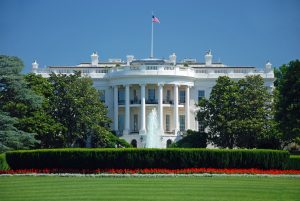A recent article in Law360 shines a spotlight on an Amended Complaint filed by Pillsbury’s award-winning Insurance Recovery and Advisory Group in a significant insurance recovery action seeking coverage for COVID-19 business interruption. In it, the Amended Complaint is described as a “beefed-up filing” where our colleagues have “unleashed a deluge of scientific studies on COVID-19.” The article suggests that the “the arguments outlined in Tuesday’s filing could be a potential avenue around Mama Jo’s v. Sparta Insurance Co., a heavily cited decision in which the Eleventh Circuit held that policyholders must show their properties required physical repairs to constitute direct physical loss. A number of insurers have pointed to that ruling in shooting down COVID-19 insurance cases.”
For more information on this or related issues, please contact Joseph Jean, Scott Greenspan, Benjamin Tievsky or Janine Stanisz.





 In recent weeks, two insurers with significant legacies of occurrence-based general liability coverage took important steps to liquidate their estates.
In recent weeks, two insurers with significant legacies of occurrence-based general liability coverage took important steps to liquidate their estates. Insurers generally have a statutory duty to provide a legitimate factual and legal basis to deny a claim, and to discharge this duty sometimes engage in-house or outside counsel to assist in the investigation and handling of policyholders’ claims for coverage, including ghostwriting coverage correspondence and denials of coverage. The decision to outsource ordinary claims investigation and handling to legal counsel (putting aside that many claims handlers are lawyers) comes at a price. Two recent court rulings highlight that insurers’ decision to use in-house or outside counsel to ghostwrite coverage correspondence can come back to haunt them by waiving any alleged privilege.
Insurers generally have a statutory duty to provide a legitimate factual and legal basis to deny a claim, and to discharge this duty sometimes engage in-house or outside counsel to assist in the investigation and handling of policyholders’ claims for coverage, including ghostwriting coverage correspondence and denials of coverage. The decision to outsource ordinary claims investigation and handling to legal counsel (putting aside that many claims handlers are lawyers) comes at a price. Two recent court rulings highlight that insurers’ decision to use in-house or outside counsel to ghostwrite coverage correspondence can come back to haunt them by waiving any alleged privilege. The Biden administration has hit the ground running with executive orders, regulatory and legislative priorities, and cabinet-level and other top posts being announced on a daily basis. Our public policy colleagues have been closely tracking many of the policy priorities of the new administration and
The Biden administration has hit the ground running with executive orders, regulatory and legislative priorities, and cabinet-level and other top posts being announced on a daily basis. Our public policy colleagues have been closely tracking many of the policy priorities of the new administration and  Since the beginning of the COVID-19 business interruption insurance coverage battles, insurers have labored to pour cold water on these claims—often hiring the biggest and wealthiest law firms in America to crush hair salons, motels, restaurants and bars represented by solo practitioners or lawyers with little prior insurance coverage experience. Not surprisingly, insurers have been successful in many of these early David-versus-Goliath cases (many of which involved policies with virus exclusions that the policyholders were seeking to avoid by pointing to government shutdown orders—and not the virus—as the sole cause of their loss), as
Since the beginning of the COVID-19 business interruption insurance coverage battles, insurers have labored to pour cold water on these claims—often hiring the biggest and wealthiest law firms in America to crush hair salons, motels, restaurants and bars represented by solo practitioners or lawyers with little prior insurance coverage experience. Not surprisingly, insurers have been successful in many of these early David-versus-Goliath cases (many of which involved policies with virus exclusions that the policyholders were seeking to avoid by pointing to government shutdown orders—and not the virus—as the sole cause of their loss), as  Since the novel coronavirus landed in America, the insurance industry has worked hard to create the impression that there is no coverage for business interruption losses resulting from the pandemic. For the most part, insurers have discussed the “intent” of the policies and avoided specific policy analysis. The insurer disinformation effort recently started including citations to lists of court decisions obtained to date—as if insurance coverage should be decided not on the terms of the contracts at issue but instead on the basis of an early win/loss record. A review of court statistics, along with two recent court decisions, expose the fallacy of the insurers’ argument.
Since the novel coronavirus landed in America, the insurance industry has worked hard to create the impression that there is no coverage for business interruption losses resulting from the pandemic. For the most part, insurers have discussed the “intent” of the policies and avoided specific policy analysis. The insurer disinformation effort recently started including citations to lists of court decisions obtained to date—as if insurance coverage should be decided not on the terms of the contracts at issue but instead on the basis of an early win/loss record. A review of court statistics, along with two recent court decisions, expose the fallacy of the insurers’ argument. If 2020 was the year of the pandemic, 2021 appears to be shaping up to be the year of “returning to normal.” So far, most coverage disputes related to COVID-19 have been reactions to direct losses caused by the virus and related measures (i.e., relating to business interruption or event cancellation). In the upcoming months and years, however, many businesses will have to make proactive decisions on how to return to work. It is important for businesses to understand how those decisions may impact a variety of potential insurance coverages, including possible D&O coverage, as this post will discuss. Additionally, now that insurance companies have a better understanding of the types of risks involved with COVID-19, coverage terms and exclusions in policies issued after the pandemic may become drastically different.
If 2020 was the year of the pandemic, 2021 appears to be shaping up to be the year of “returning to normal.” So far, most coverage disputes related to COVID-19 have been reactions to direct losses caused by the virus and related measures (i.e., relating to business interruption or event cancellation). In the upcoming months and years, however, many businesses will have to make proactive decisions on how to return to work. It is important for businesses to understand how those decisions may impact a variety of potential insurance coverages, including possible D&O coverage, as this post will discuss. Additionally, now that insurance companies have a better understanding of the types of risks involved with COVID-19, coverage terms and exclusions in policies issued after the pandemic may become drastically different. The United States
The United States